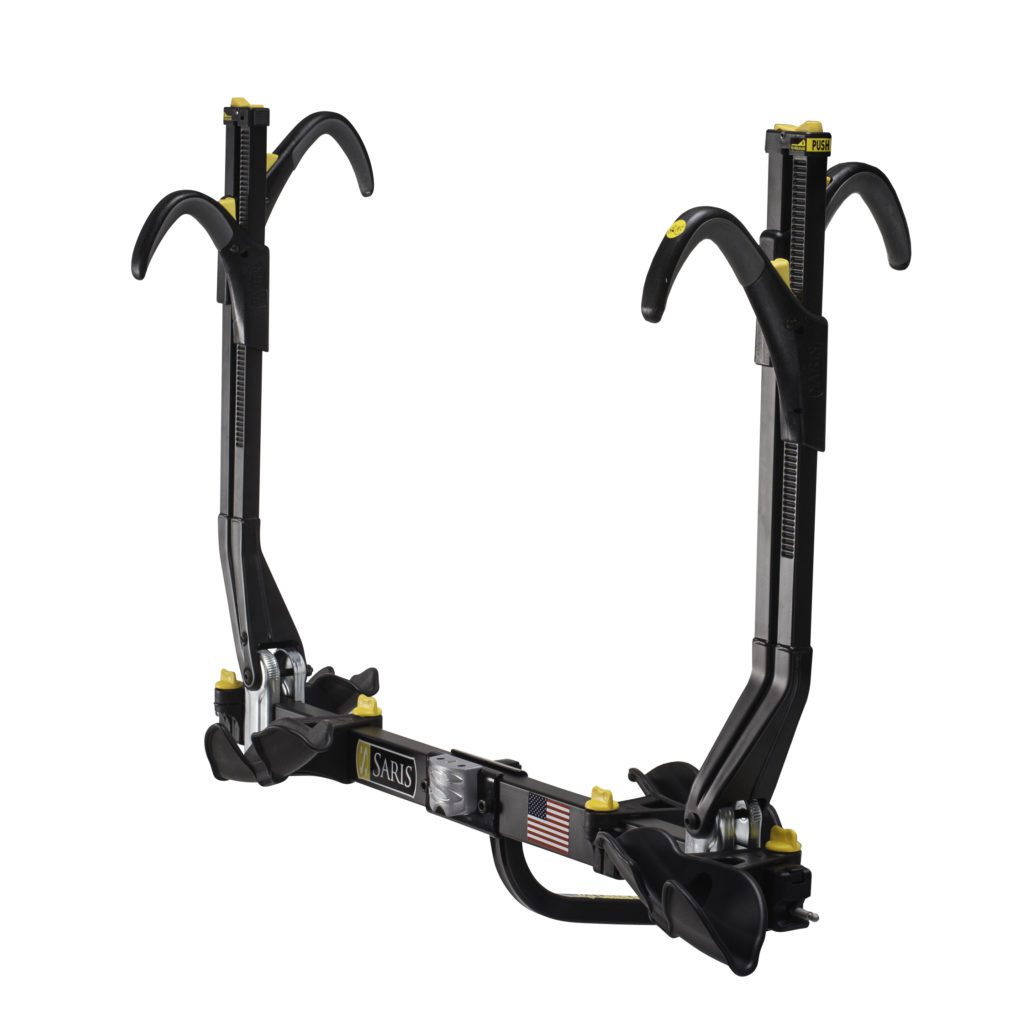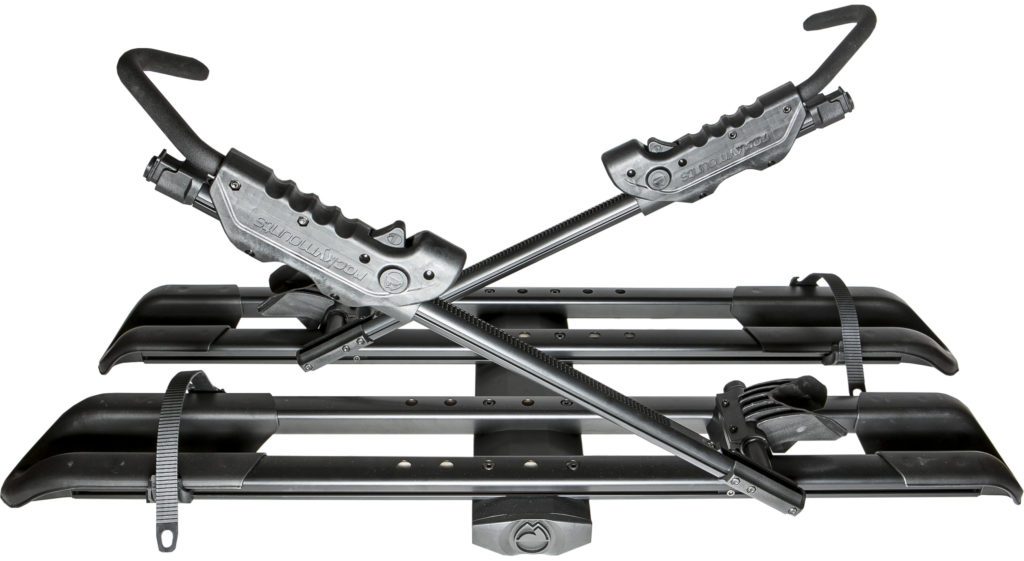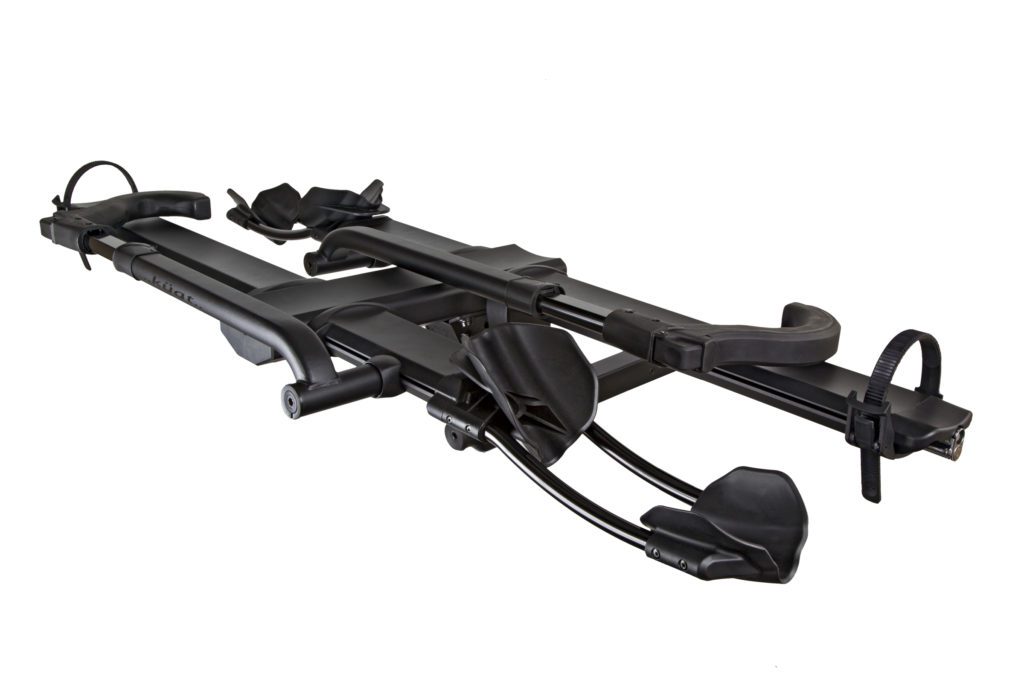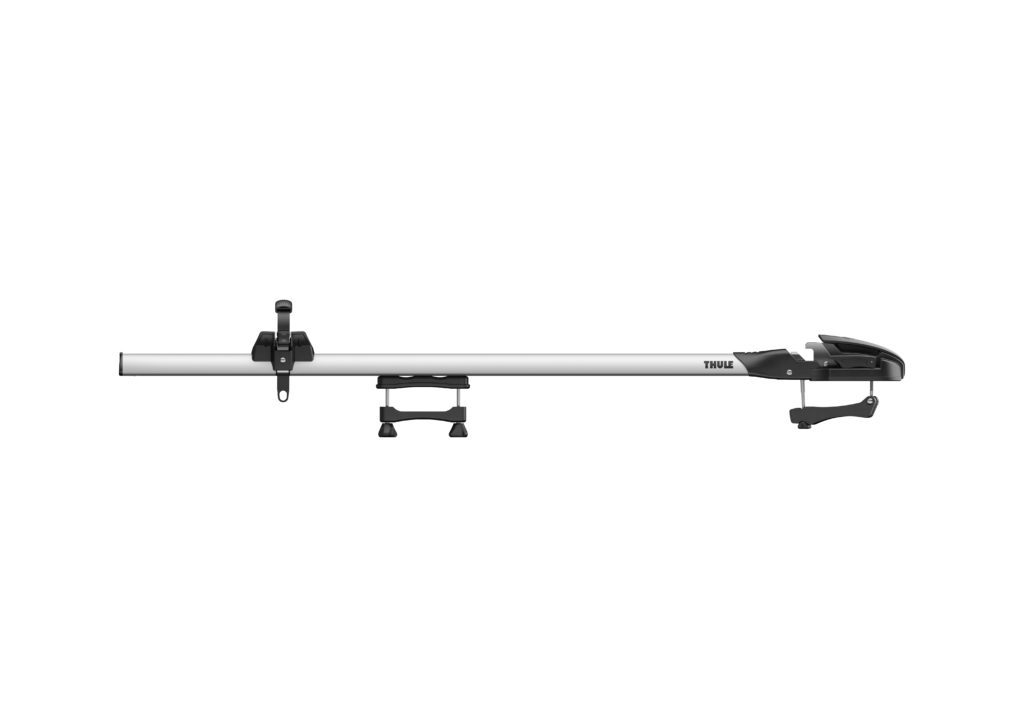Carrying carbon: Five top racks for moving two wheels with four
If you want to transport your carbon-fibre bike on your four-wheel vehicle, you should look to the top of your car or the back. Rooftop mounts and hitch racks that don’t hold onto frames are the way to go. Carbon-fibre tubes are designed for a very specific set of forces, and external clamping isn’t one of them.

So, rooftop or hitch?
What’s best for you and your vehicle? Well, it depends on a few factors. A rooftop mount can be the more cost-effective option, especially if you already have a roofrack system. Generally, adding a roof-rack system is cheaper than getting a trailer hitch installed, but do price things out on both fronts. Mounts themselves are less expensive than hitch racks. If you plan on leaving things attached to your vehicle, roof mounts are the more discreet option. Putting your bike up top makes your ride less aero, which will affect fuel economy. Your bike is also likely to get dirtier on the roof, catching bugs, than tucked in at the back. And, we’ve all heard about the guy who forgot he had his carbon-fibre dream machine on the roof of his car as he pulled into the underground parking garage.
With a hitch rack, you won’t tax your spindly little cyclist arms trying to lift your bike way up to the roof of your SUV. While you won’t smash your bikes up going through a drive-thru with a hitch rack, you might bottom out the rack on an incline or bumpy surface if your vehicle is low. Most racks only accommodate two bikes. You can add more carrying capacity to some, but usually only if you have a 2″ connection.

The Saris Freedom Superclamp 2-Bike ($580, saris.com) is the standout rack of the group. It’s a good price and very easy to install. I was able to get it bike-ready faster than even the two roof-mounts in this test. It can fit a 2″ or 1 .” connection. The Superclamp consists of one main rail that holds two arms, each with two hooks. Two bikes sit in wheel trays and are held in place by straps, the arms – which have locking detents at their pivots – and the hooks. The tested model didn’t have a tilt option: I had to unload bikes to get back into the trunk. The 2017 edition coming this spring will have such a mechanism. Cable locks extend from the ends of the rail and attach to the plate in the centre, which also has a bottle opener. The Superclamp is simple, solid and performs great.

The RockyMounts SplitRail ($650, rockymounts.com) is the biggest hitch rack in this group. It has two trays, each made of two rails. Of the racks, this one took me the longest to assemble; affixing the load arms was a bit finicky. Once I had everything together, it was easy to load bikes. The trays have the best side-to-side range of all the racks, so you can keep handlebars or other parts from knocking. The tilt function did a good job of moving bikes away from the vehicle to let me get back into the trunk. The SplitRail works best with mountain bikes with tires as wide a 3.0″. When I loaded on my cross bike, the 33c tires and wheels with 45-mm rims sat so deeply in the tray that the cinched rear-wheel strap didn’t come into contact with the wheel’s rim. The rack, which can hold bikes with wheels ranging from 20″ to 29″, ships with a wall mount for storage.

In a few senses, the Kuat NV 2.0 Base ($785, kuatracks.com) sits between the Saris and RockyMounts racks. It isn’t as big as the SplitRail and it’s bigger than the Superclamp. The NV took me longer to assemble than the Superclamp, but not as long as the SplitRail. The NV 2.0 Base is the nicest looking rack with the most refined components. The tilt mechanism is easy to use. If you have a 2″ hitch, you can attach an add-on, doubling the capacity to four bikes. I found the hooks had the best rubber for holding the front wheel and even parts of the fork. Unlike the Superclamp, the NV doesn’t have a bottle opener on it, but its keys come on a bottle-opener keychain.

I tested the Thule ThruRide 535 ($300, thule.com) rooftop mount on a Ford Escape with factory curved rails. I must confess that I went for the front-wheel-off ThruRide instead of the front-wheel-on Sidearm 594XT because I would be steadier lifting a bike up without the weight and bulk of a front wheel. The mount is well-engineered, but I found it finicky affixing it to the factory rails. I’m sure the process would be smoother with a full Thule rack system. The mount’s cam system that holds the front thru axle or quick-release adapter is solid and confidence-inspiring.

Like the ThruRide, I attached the Yakima Forklift ($230, yakima.com) to the Ford Escape. But unlike the Thule mount, the Forklift went on fairly quickly. The ratchet tab on the rear-wheel strap is smooth and snugs things up well. If you don’t want the mount on full-time, it’s simple to remove. I really like the Forklift’s ease-of-use and solid hold on a bike.
